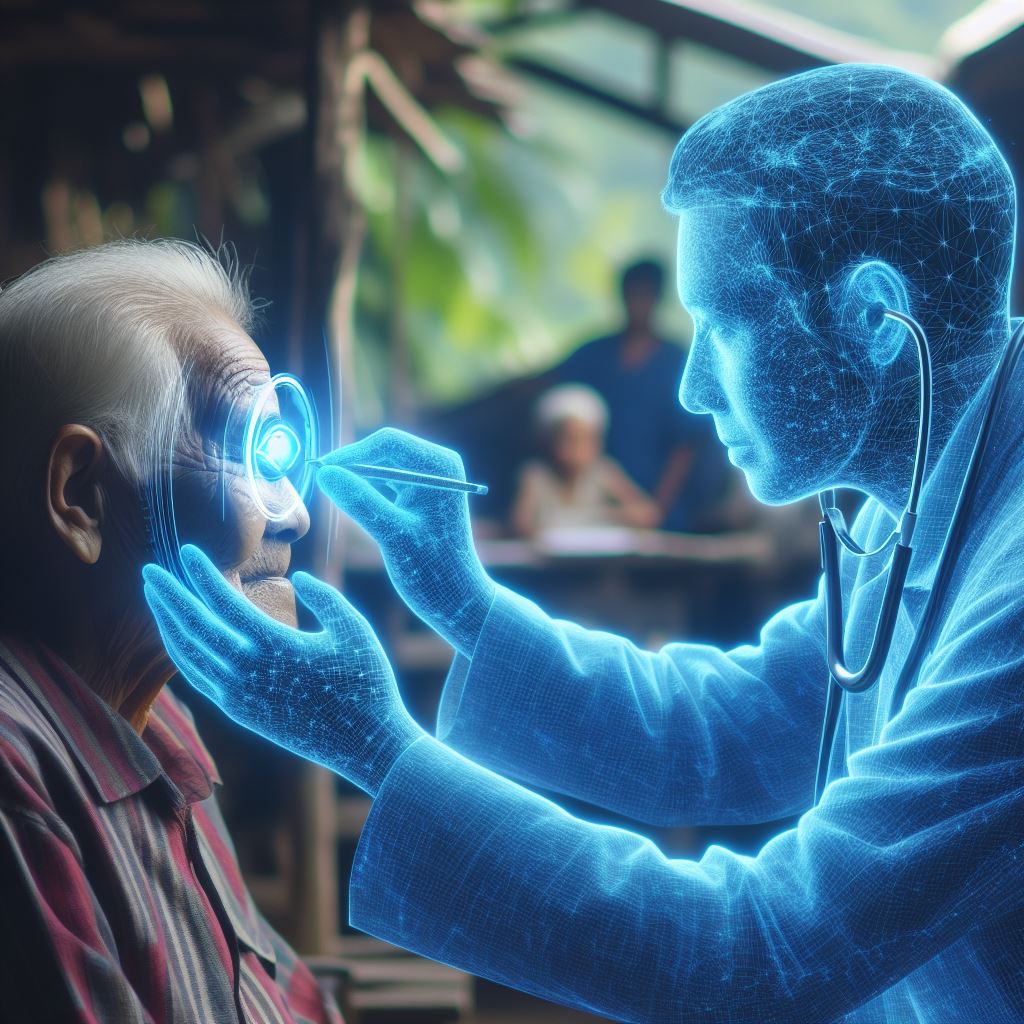
1. Introduction to Telemedicine in Ophthalmology
Telemedicine is a way of providing medical care from a distance using technology. It’s like having a doctor’s appointment over the internet. This can be really helpful for people who can’t easily get to a doctor’s office.
In the field of eye health, which is called ophthalmology, telemedicine can play a big role. For example, it can help people get eye exams and treatment without having to travel to a clinic.
Technology is always getting better, and this is making telemedicine even more useful. With high-quality video calls, doctors can check a patient’s eyes and see problems just like they would in person.
So, telemedicine in ophthalmology is a powerful tool that can help bring eye care to more people. And as technology continues to improve, it’s likely to become an even bigger part of how we take care of our eyes.
More resources:
- Definition and scope of telemedicine1
- The role of telemedicine in ophthalmology1
- The impact of technological advances on telemedicine1
2. Best Practices for Telemedicine
When we use telemedicine, we want to make sure we’re doing it in the best way possible. Here are some things to keep in mind:
- Choosing the Right Technology for Patients: Not all patients are comfortable with technology. Some might not have access to the internet or a device for video calls. So, it’s important to choose a method that works best for each patient.
- Ensuring High-Quality Care: Just because we’re using telemedicine doesn’t mean the quality of care should be any less. We need to make sure that the video and audio are clear, and that the doctor can see and hear everything they need to.
- Learning from Others: Telemedicine is being used more and more in ophthalmology. By looking at how others are using it, we can learn what works and what doesn’t. This can help us improve our own practices.
Remember, the goal of telemedicine is to make healthcare more accessible. By following these best practices, we can ensure that we’re providing the best care possible, even from a distance.
More resources:
- Determining the appropriateness of technology for patients2
- Ensuring high-quality ophthalmological telemedicine2
- Reviewing current use of telemedicine in ophthalmology2
3. Prescribing in Telemedicine
When a doctor gives a patient a prescription, it means they’re telling the patient to take a certain medicine. In telemedicine, this can be a bit tricky, but here’s how we can do it right:
- Guidelines for Prescribing: Every place has rules about how doctors can give prescriptions through telemedicine. It’s important to know these rules and follow them. This way, we can make sure that patients get the right medicine in the right way.
- Legal and Ethical Considerations: When we give a prescription through telemedicine, we have to think about what’s legal and what’s right. For example, we need to make sure the patient really needs the medicine, and that it’s safe for them to take it. We also need to protect the patient’s privacy and make sure they understand how to take the medicine.
Remember, the goal of telemedicine is to help patients get the care they need, even if they can’t see the doctor in person. By following these guidelines, we can make sure that prescribing in telemedicine is safe and effective.
More resources:
4. Challenges and Solutions in Telemedicine
Telemedicine is a great tool, but it’s not without its challenges. Here are some of the main ones, and some solutions:
- Technical Issues: Sometimes, the internet connection can be poor, or people might not have access to the technology they need1. To solve this, we can work on making telemedicine work with lower-quality connections, and help people get the technology they need1.
- Privacy and Data Security: When we’re dealing with people’s health information, we need to make sure it’s secure2. This means using secure systems, and making sure everyone knows how to use them safely2.
- Physical Examinations and Diagnostics: Some things are hard to do over the internet. For example, a doctor might need to physically examine a patient, or do a certain test1. To solve this, we can develop new ways to do these things remotely, or find ways to combine telemedicine with in-person care1.
- Training: Both healthcare providers and patients need to know how to use telemedicine effectively1. This means providing good training and support1.
- Acceptance: Not everyone is comfortable with using telemedicine1. To solve this, we can work on making telemedicine easier to use, and help people understand its benefits1.
Remember, these are just some of the challenges we face with telemedicine. But with hard work and creativity, we can overcome these challenges and make telemedicine a great tool for everyone1.
5. Future of Telemedicine in Ophthalmology
Telemedicine is not just a thing of the present, it’s also the future. Here’s what we can expect:
- Digital Health Platforms: Just like how we use apps for everything from shopping to learning, we’ll use them for eye care too1. These digital health platforms will make it easier for us to get the care we need1.
- Innovative Uses: Telemedicine is always evolving. In ophthalmology, we’re finding new and exciting ways to use it1. For example, we’re developing “hybrid telemedicine,” where patients can get their testing or imaging done at an eye exam office, then go home. The ophthalmologist will review the test, come up with a treatment plan, and then call the patient to go over the results1.
- Improving Access to Care: One of the biggest goals of telemedicine is to make eye care more accessible1. By putting the tools for eye exams in the communities where people live, we can help more people get the care they need1.
The future of telemedicine in ophthalmology is bright. With new technologies and innovative ideas, we’re making eye care more accessible and effective for everyone1.





